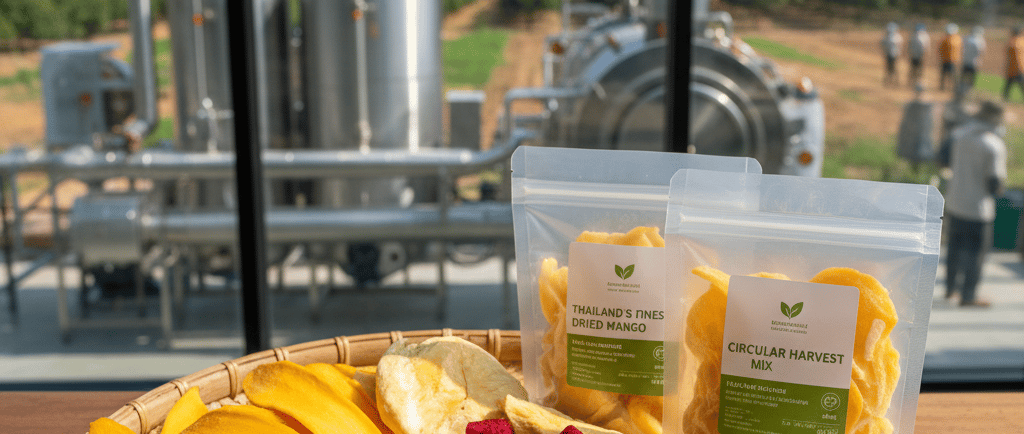Sustainable Freeze-Drying: Reducing Food Waste and Boosting Circular Economy in Thailand
Freeze-drying helps Thailand's farmers turn surplus produce into high-value, long-lasting products, reducing food waste and boosting the circular economy
FREEZE DRIED FRUITSTHAILANDHEALTHFREEZE DRYSOUTH EAST ASIANASIAN FOODSFREEZE DRIED SNACKSTEXTUREFREEZE DRIED PRODUCTSDURIANENVIRONMENTFOOD WASTEASIAFREEZE DRIED FOODSECONOMICSFREEZE DRYINGEXOTIC FRUITSFREEZE-DRIED PRODUCT SUPPLIERSFOOD PRESERVATIONTECHNOLOGYTASTENUTRITION
10/13/20252 min read


Sustainable Freeze-Drying: Reducing Food Waste and Boosting Circular Economy in Thailand
Thailand, a major agricultural producer, often faces a challenge: surplus produce. When a season brings a huge harvest of fruits or vegetables, a lot of it can't be sold or eaten in time, leading to significant food waste. This is where freeze-drying technology steps in as a powerful and sustainable solution.
Freeze-drying, also called lyophilization, is a high-tech way to remove water from food without using high heat. The food is first frozen, and then placed in a vacuum chamber where the ice turns directly into vapor, skipping the liquid phase. This simple process has huge benefits for both the environment and the economy.
Turning Waste into Value
The main power of freeze-drying is its ability to transform perishable surplus into valuable, long-lasting products.
* Saving the Harvest: Instead of letting large amounts of seasonal produce—like mangos, durian, or other tropical fruits—go bad, farmers and food companies can quickly freeze-dry them. This prevents spoilage and waste.
* Long Shelf Life: Freeze-dried products have a very low moisture content (around 1-2%), giving them a shelf life of up to 25 years or more without needing refrigeration. This is a game-changer for food security and storage.
* Preserving Quality: Unlike traditional drying, the low-temperature process keeps the food's original shape, color, flavor, and, most importantly, most of its nutritional value. When you add water, the food rehydrates almost like it was fresh.
Boosting the Circular Economy
Using freeze-drying in Thailand does more than just save food; it actively supports a circular economy. This is an economic model that aims to eliminate waste and make continuous use of resources.
* Creating New Revenue Streams: The long shelf life and high quality of freeze-dried products open up new, profitable markets. Farmers and small businesses can sell their surplus as premium dried snacks, ingredients for ready-to-eat meals, or even nutritional powders. This adds economic value to produce that was once considered waste.
* Lowering Shipping Costs: Since water is removed, the final product is extremely lightweight (70–90% lighter). This drastically reduces the cost and fuel needed for transportation and export, making Thai products more competitive globally and lowering their carbon footprint.
* Less Reliance on Cold Chains: Because freeze-dried foods don't need to be kept cold, there’s less need for energy-intensive refrigeration during transport and storage, which further supports sustainable practices.
In conclusion, freeze-drying technology is a smart and sustainable tool for Thailand. By taking surplus produce and turning it into high-quality, lightweight, and long-lasting products, the technology significantly reduces food waste, creates new wealth for local producers, and moves Thailand closer to a truly circular and sustainable food system.
Quality
Premium freeze-dried products for healthy snacks and long-term storage.
Innovation
Sustainability
© 2024. All rights reserved.
